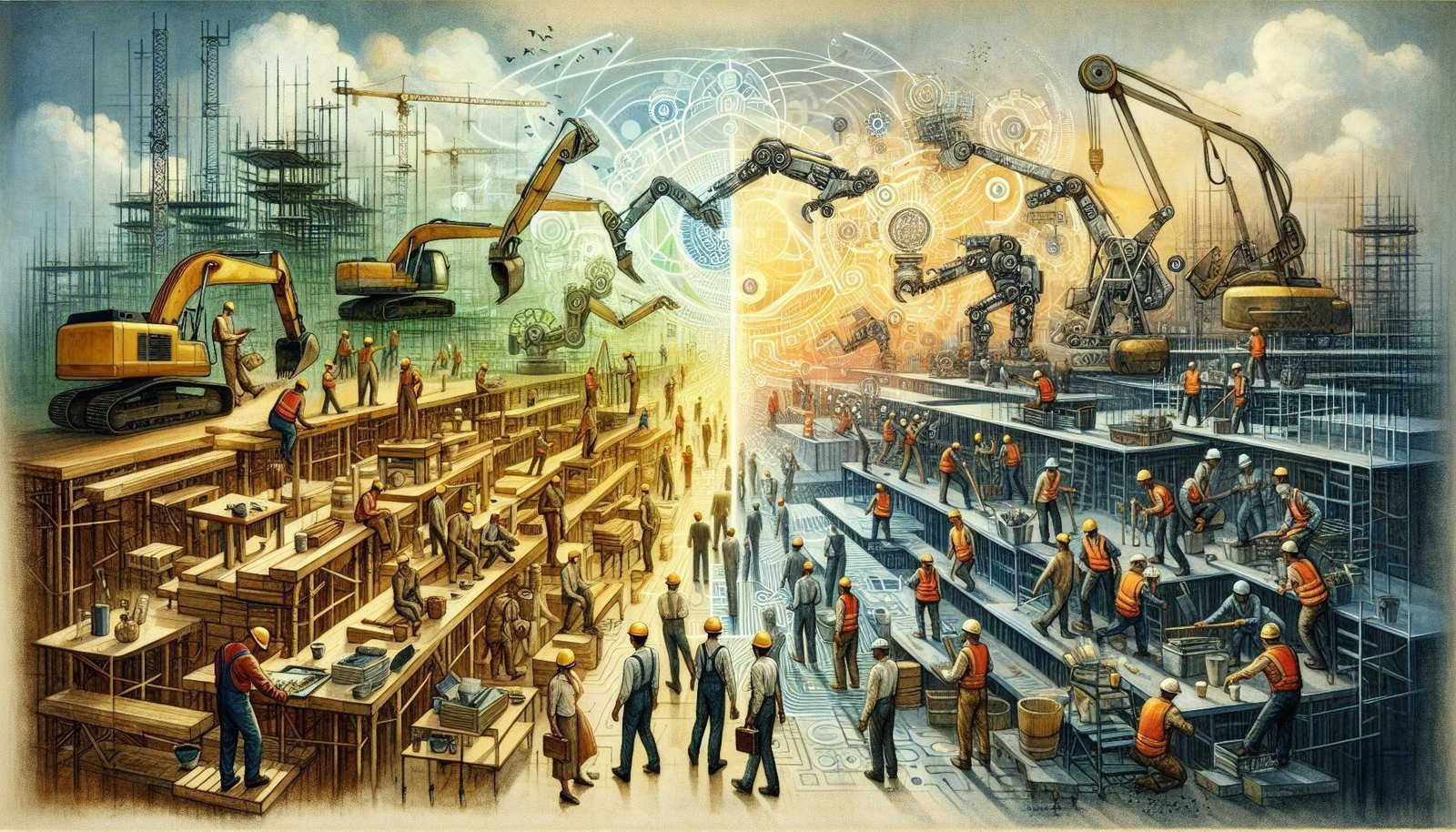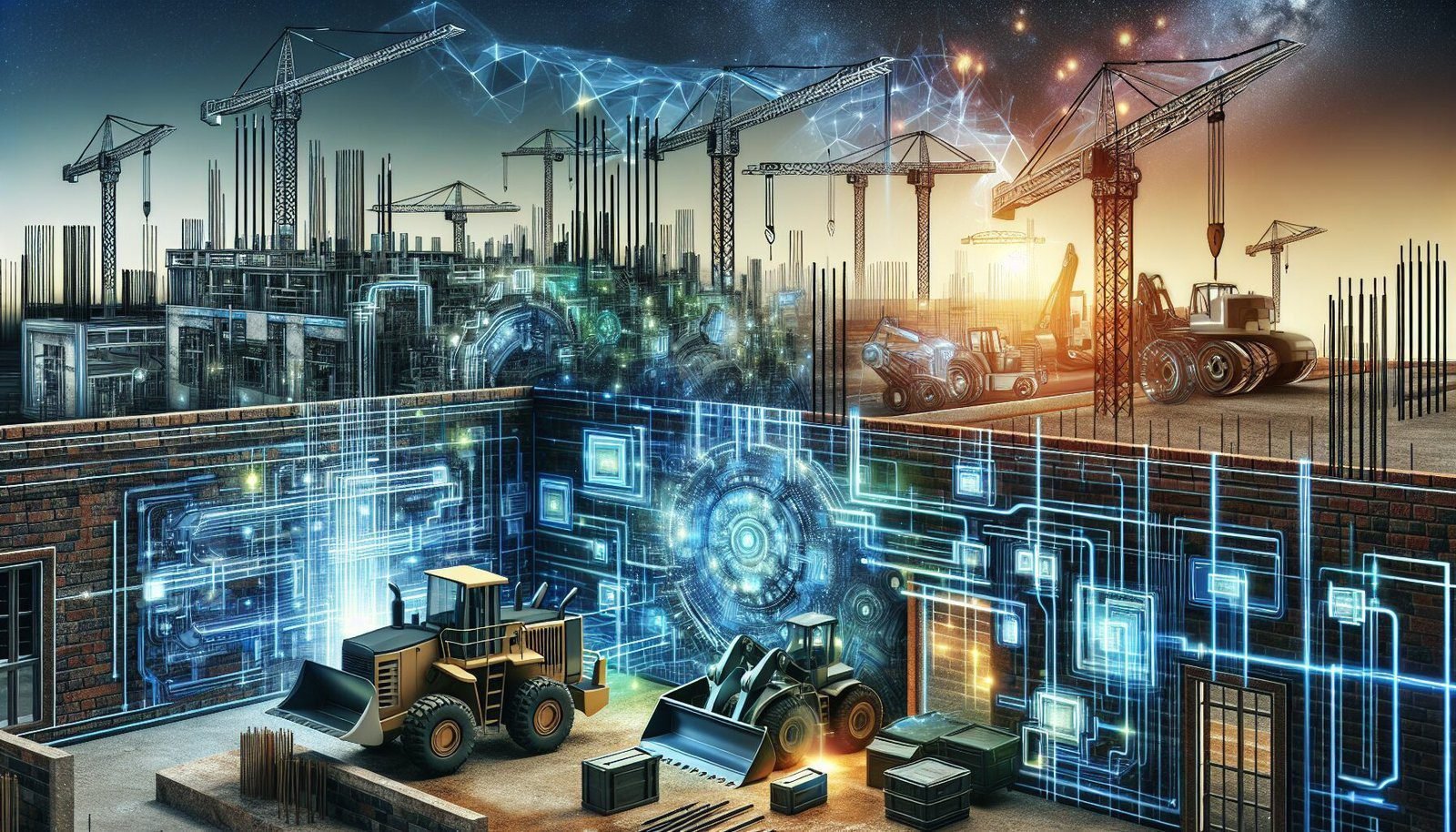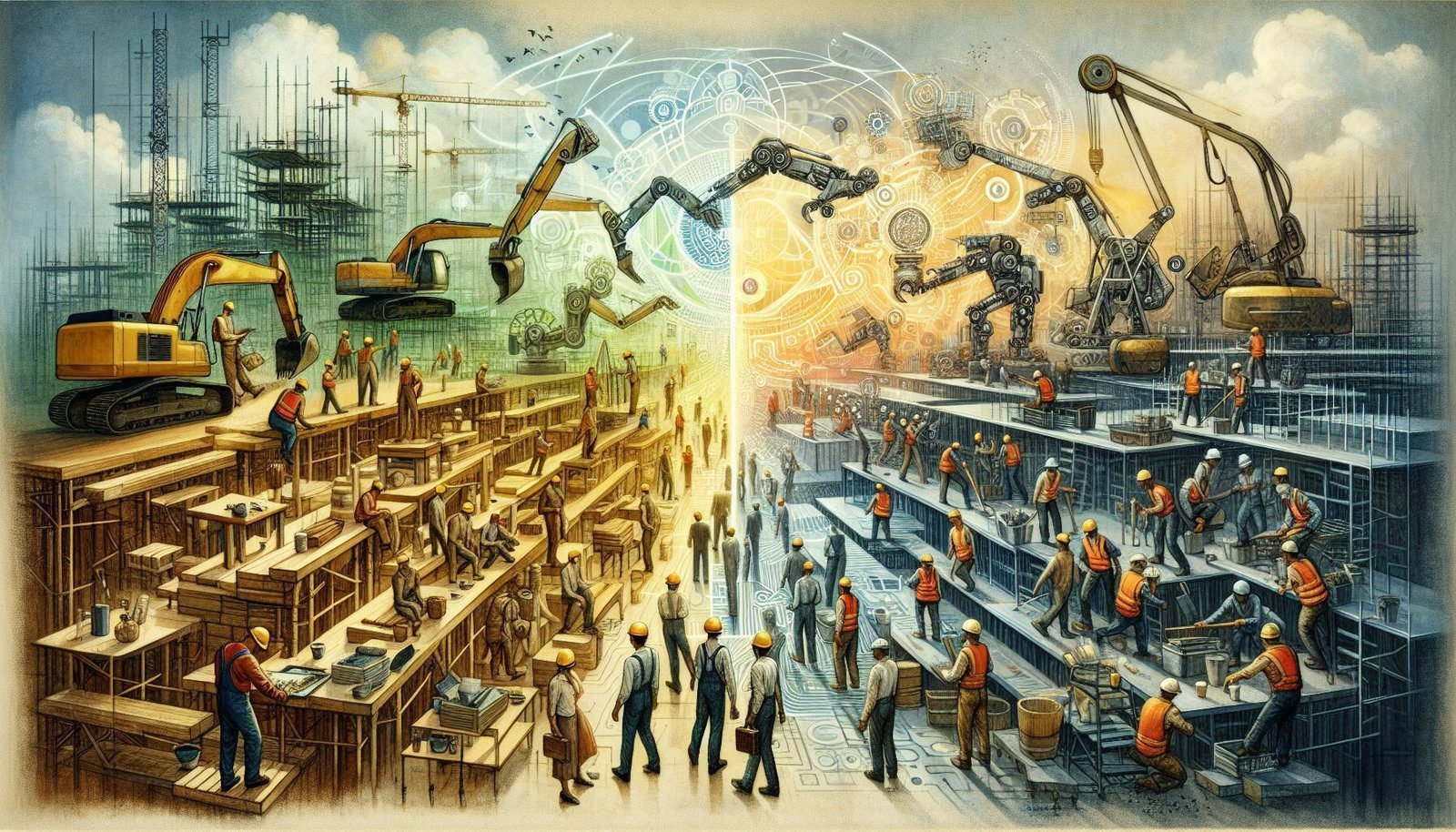December 23, 2023
AI-Powered Construction: Shaping the Tools of Tomorrow’s Building
Imagine a world where the skylines of our cities materialize with seamless precision, thanks in no small part to the brilliance of AI-powered construction tools. As we embrace the dawn of technological advancement in the building industry, these innovative solutions are transforming the way we approach our construction projects. From optimizing planning and design to enhancing on-site efficiency and safety, these intelligent systems are reshaping the toolbox of the modern builder, ensuring that the future of construction is not only smarter but also more sustainable. Join us as we explore the dynamic landscape where artificial intelligence meets the enduring craft of building, heralding a new era in the conception and creation of our architectural wonders.
AI-Powered Construction: A Paradigm Shift
In the dynamic world of construction, AI-powered solutions have introduced a paradigm shift that’s transforming how we tackle projects from conception to completion. The integration of artificial intelligence in the construction industry heralds a new era of efficiency, safety, and innovation, affecting every aspect and phase of construction.
Defining AI in Construction Context
When we talk about AI in construction, we’re referring to the application of machine learning, data analytics, and smart algorithms to automate and improve building processes. It’s not just about fancy robots; it’s about harnessing the power of AI to analyze data, predict outcomes, and make smarter decisions on the fly that can save time, reduce waste, and cut costs.
Overview of AI Integration in Construction
AI technology is rapidly weaving its way into various facets of the construction industry. From the initial planning stages to the final touches of a structure, AI systems are enabling us to gather and analyze data like never before, streamline tedious tasks, and anticipate potential issues before they become costly problems. This technology is not replacing the human touch; rather, it’s enhancing our natural capabilities, allowing us to achieve more with our combined human-AI efforts.
The Evolution from Traditional to AI-Enhanced Building
We’ve come a long way from the conventional approaches that heavily relied on manual labor and rudimentary tools. The evolution from traditional building methods to AI-enhanced processes marks a significant leap in productivity and innovation. AI allows us to look ahead, leaving behind the inefficiencies of the past and embracing a future dotted with smart construction sites, automated machinery, and data-driven decision-making.
Intelligent Design and Planning
Automated Architectural Design
Imagine a world where buildings come to life through the touch of a button—this is the reality we’re inching towards with automated architectural design. By using AI, we can explore countless design permutations in a fraction of the time it would take us using traditional methods. These systems are capable of suggesting optimizations that align with safety regulations, environmental standards, and aesthetic values.
AI in Structural Engineering
AI is revolutionizing structural engineering by enabling us to simulate scenarios and analyze the structural integrity of buildings under varying conditions before they’re even built. These smart systems can suggest materials and construction techniques that optimize strength and efficiency while minimizing costs and environmental impact.
Optimizing Resource Allocation with AI
Resource allocation is a pivotal element in effective construction planning. Thanks to AI, we can now optimally allocate our resources by analyzing past data and current variables to predict the best possible use of manpower, materials, and machinery. This not only conserves resources but also helps in trimming down the environmental footprint of our projects.
Predictive Analytics in Construction
Risk Assessment and Management
In the construction industry, risk lurks at every corner, and AI is our ally in managing it. With AI-driven predictive analytics, we can foresee potential risks and take preventive measures to mitigate them. Be it weather disruptions, safety hazards, or budget overruns, we can now devise strategies to navigate around these risks proactively.
Forecasting Project Outcomes
AI’s ability to forecast project outcomes is transforming construction planning and execution. By analyzing large datasets, AI can predict project timelines, cost-to-completion estimates, and likelihoods of successful implementation, thereby helping us slash through uncertainties and stride forward with confidence.
Improving Quality and Safety Standards
Our commitment to quality and safety is unwavering, and AI aids us in maintaining high standards. Utilizing data from various sources, AI systems can identify patterns that may lead to quality or safety issues, enabling preemptive resolutions and ensuring that we consistently deliver excellence.
AI in Construction Project Management
AI-Powered Scheduling and Timelines
Mastering the art of scheduling is no easy feat, but AI-powered tools make it almost second nature. We can now crunch complex datasets to craft schedules that account for all variables, ensuring the timely delivery of projects. AI helps us dynamically adjust these timelines in response to real-world changes, keeping our projects on track.
Resource Utilization and Optimization
Getting the most out of our resources is essential for sustainable construction. AI solutions provide us with insights on how to maximize the utilization of our workforce and materials. They make sure that every piece of the puzzle is used where it fits best, minimizing waste and amplifying productivity.
Real-time Decision Making with AI
In the rhythm of a construction project, every moment counts, and decisions need to be made swiftly and effectively. AI grants us the power to make informed decisions in real-time, ensuring that our projects flow smoothly and that we’re always one step ahead in the game.
Robotics and Automation on Site
Robots in Automated Assembly and Fabrication
The dance of robots on our construction sites is a symphony of precision and efficiency. These mechanical marvels are ideal for tasks like automated assembly, fabrication, and even intricate bricklaying. Robots not only speed up the construction process but also reduce human error and enhance the overall quality of the build.
Drones for Surveying and Inspection
With drones taking to the skies, we’re able to survey and inspect our sites with an eagle’s eye view. Their ability to capture high-resolution images and generate accurate 3D models is invaluable, offering a perspective that enhances our understanding of the terrain and our project’s progress.
Enhancing Human Labor with Exoskeletons
We care deeply for the safety and well-being of our workforce, which is why the use of exoskeletons in construction excites us. These wearable suits boost human strength and endurance, allowing us to perform labor-intensive tasks with less strain and reduced injury risk, paving the way for a healthier work environment.
Machine Learning for Cost Estimation
Data-Driven Budgeting
In cost estimation, accuracy is key, and machine learning models are reshaping how we approach budgeting. By processing vast amounts of data, these models provide precise cost forecasts that help keep our projects financially sound from the start.
Enhancing Cost Precision
Machine learning algorithms play a crucial role in enhancing the precision of our cost estimates. They dissect historical data to unravel cost patterns and derive estimations that mirror reality much more closely than traditional methods.
Predictive Cost Management
Predictive cost management is about foreseeing the financial journey of construction projects, and machine learning stands at the helm of this endeavor. It allows us to anticipate cost deviations and respond appropriately, keeping our projects within the guardrails of our budgets.
Sustainable Building with AI
Energy Efficiency Modelling
Sustainability is the core of contemporary construction, and energy efficiency modelling, powered by AI, is our ally in this mission. Through simulation and analysis, we are now able to predict and optimize the energy consumption of our buildings, aiming for a greener footprint and a more sustainable future.
Waste Reduction through Optimized Processes
AI empowers us to trim down waste to a minimum by optimizing construction processes. By predicting the exact amount of materials needed and the best way to use them, we not only conserve resources but also contribute to a cleaner and more efficient building environment.
Incorporating Renewable Energy Sources
We’re always searching for ways to harmonize our projects with the environment, and incorporating renewable energy sources is a significant step in this direction. AI helps us identify the optimal integration of these green energy solutions into our buildings, ensuring a sustainable and eco-friendly outcome.
Supply Chain Optimization
AI in Materials Procurement
Material procurement can be a daunting task, but with AI, it becomes a walk in the park. AI systems analyze fluctuating prices, availability, and supplier performance to suggest the most cost-effective and reliable procurement strategies.
Inventory Management through AI
Effective inventory management is crucial for any construction project, and AI brings unparalleled efficiency to this realm. With intelligent systems, we can predict supply needs, track inventory levels, and minimize the risk of overstocking or shortages, ensuring smooth operations.
Predictive Maintenance of Construction Equipment
The health of our construction equipment is vital for uninterrupted progress. AI-driven predictive maintenance helps us anticipate equipment failures before they occur, scheduling maintenance only when necessary, and thus saving precious time and resources.

BIM and AI: A Powerful Combination
Integrating AI with Building Information Modeling (BIM)
The fusion of AI with Building Information Modeling (BIM) is a game-changer. This powerful combination enables us to create detailed simulations, perform in-depth analysis, and make proactive decisions, all within the virtual realm of a construction project before the first stone is laid.
Simulations and 3D Models
With simulations and 3D models powered by AI and BIM, we can virtually walk through our projects, scrutinize every corner, and test various scenarios. This helps us fine-tune our designs, anticipate potential problems, and devise solutions ahead of time.
Collaboration and Communication Enhancement
One of BIM’s greatest strengths is enhancing collaboration and communication among stakeholders. When combined with AI, the capabilities expand, fostering a highly collaborative environment where information is shared efficiently, and everyone stays informed and aligned with the project goals.
Conclusion: Constructing the Future with AI
Summarizing the AI Revolution in Construction
The AI revolution in construction is reshaping the landscape of building, making the entire process faster, safer, and more efficient. AI and machine learning are not just buzzwords—they are vital tools that are propelling our industry forward into a future defined by digital innovation and smart solutions.
Envisioning the Next Decade of Construction
As we look towards the next decade, we envision construction sites humming with AI-driven processes, data-backed decision-making, and robotics precision. The AI infusion into our industry is set to deepen, bringing about even more remarkable advancements in building technology.
Guiding Principles for Integrating AI in Building
As we embrace AI in our construction workflows, we are guided by principles of sustainability, efficiency, and safety. We tread this path with the understanding that technology serves as an extension of our expertise, a tool that augments our capacity to build smarter, not a substitute for the human touch. Together, we are constructing the future with AI, shaping the tools of tomorrow’s building in harmony with the world of today.

























